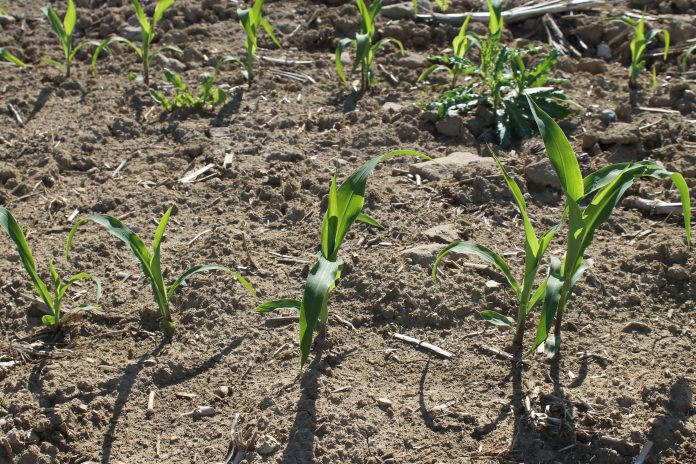SALEM, Ohio — It’s no secret that crop farmers need to be as efficient as possible in today’s market. Whether they’re selling cash crops or making their own feed, they need the highest yield for their dollar. And they have a lot of other issues to be concerned about — like nutrient placement, the weather and the environment.
Reporter Chris Kick talked with a Certified Crop Adviser from Ohio and Pennsylvania, to hear about the biggest challenges facing crop farmers, and what a crop adviser can do to help.

Jonah Johnson
Chairman of the Ohio Certified Crop Adviser Board and field agronomist with DuPont Pioneer (Xenia, Ohio):
Profitability
According to Johnson, the top concern on most crop farmers’ minds is making a profit. The low commodity prices ($3 corn, $9 beans) have made this more difficult. The profit margin has been tight for several years in a row, and it keeps getting more intense.
Crop farmers have to “pencil everything out” and watch their investments, if they want to be profitable, he said. The technology is constantly changing, which includes the seed varieties and the farm equipment.
Making the right choices
“Seed is probably one of the biggest decisions to make and it is so complex,” Johnson said. The days of when a corn hybrid was around for 10 years and everyone planted that hybrid are gone, he said. “There’s always something better and greater coming.”
Farmers can work directly with seed and fertility companies, but sometimes it makes more sense to work with a crop adviser.
“It really all boils down to the credibility and the knowledge,” Johnson said. “They’re (advisers) usually unbiased” and have to sign a code of ethics stating they’ll be ethical with the farmer.
Perhaps the biggest reason to work with a crop adviser, he said, is because they are required to have continuous education. Crop advisers need 40 credit hours every two years, which helps keep them up to date on the latest trends and issues.
Soil fertility
The soil is always the farmers greatest resource and the healthier the soil, the greater the potential for a good crop. But as farmers know, soils differ significantly from one field to another, and from one county to another. Johnson serves about 40 counties and keeps an eye on the different conditions that affect different counties, including environmental issues. He said environmental stewardship is at the top of farmers’ minds, and that good seed and nutrient placement is good for yield and the environment.

Dean Collamer
Field agronomist with GROWMARK FS (Hanover, Pennsylvania):
Making money
Much like Johnson, Collamer said the biggest issue facing farmers is profitability.
“The typical refrain at this point in time is keep your input costs under control,” he said. “It looks like we have continued low crop prices in the forecast.”
His company serves Pennsylvania and surrounding states, and he works in an area that includes a lot of dairy farmers. One of the biggest things farmers want to do — and that crop advisers can help them do — is prioritize their crop needs and maximize their yield potential.
Nutrient management
Collamer has also been helping farmers and agribusinesses follow the 4Rs of Nutrient Stewardship — a program that educates farmers on how to apply nutrients at the “right rate, right source, time and place.”
Using nutrients wisely is obviously important for crop uptake and production, but it’s also essential for a healthy environment and clean water. The western portion of Pennsylvania typically flows to the Ohio River, while eastern Pennsylvania flows to the Chesapeake Bay. Both of these watersheds have nutrient issues that are making national and international news, and farmers can do their part by controlling what happens on their individual farms.
The right decision
Even though times are tight, Collamer said it still makes sense for a farmer to weigh all of his or her options and make the most of their decisions. Sometimes, that process is best done with the help of a crop adviser, because it’s the adviser’s job to be educated and up to date with the best solutions.
“It appears that even at this time, when we’ve got low commodity prices, the growers who are going to be in business 10-20 years from now are continuing to go forward and advance and expand their use of precision farming and precision ag,” Collamer said.












